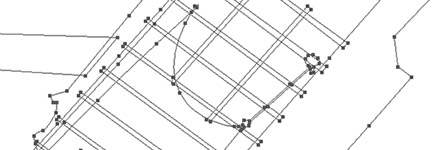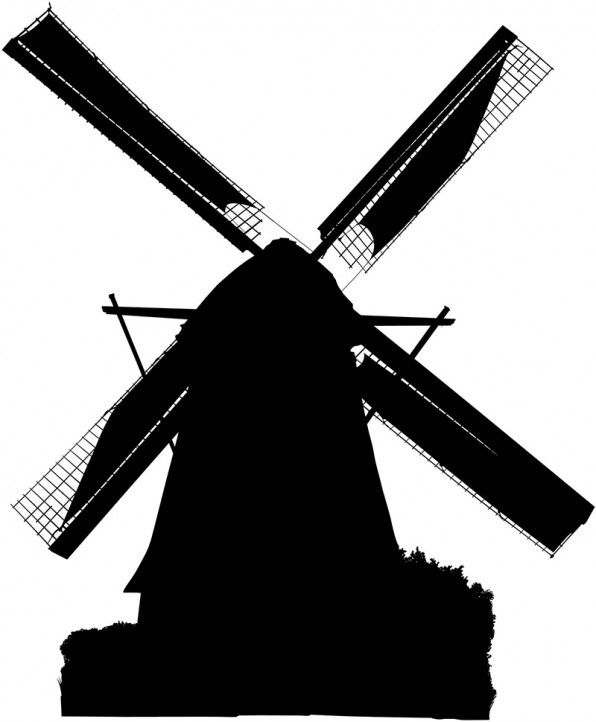The image used for the header of this article is not a CAD rendering. Neither is it a fragment of a 3D model wireframe. It is a detail from the image mask I had to produce today in order to adapt a stock image into usable element for a motion graphics project I am currently working on.
Masking, matting, rotoscoping, keying… you name it – not exactly the favorite task for most designers, yet a necessary one. But does it have to be? In this article I would like to propose a solution that could potentially free the artists from the labor of building alpha channels for their images, earn freelancers some money and help the big stock providers expand their offering.
It is 2010 and today, more than ever, web is about collaboration. Musicians release their tracks online and offer them as multi-channel files for remixing. Google Wave is slowly changing the way we communicate and edit documents. Facebook allows us to upload, share, comment, organize, tag and re-post text, images and video. Social bookmarking sites such as Stumble Upon or Digg let us share our web discoveries, review and recommend content.
Isn’t it time for professional stock image sites to get similar treatment?
What I envision is plain and simple:
Allow users to share their vector and raster masks of the images (and possibly videos) over the same system that is used to sell them the original content.
Above is the windmill mask that inspired this idea. I have spent approximately 1.5 hours creating it. (The entire project will use many more images and I estimate spending 2 days in a two-person team on creating masks for all of them.) Wouldn’t it be great if I could save the time by purchasing the mask together with the image? Or perhaps if I would be able to help others save the time they may spend repeating my chore by being able to upload the result back to the image bank?
Currently I have no such option. Every single designer who wants to have the cutout of this particular windmill will need to mask the image in their own time. I am convinced most of them would gladly pay a little extra fee to have the work completed for them.
It is worth noting here that some stock images do come with either alpha channel or a vector mask embedded in the file. Unfortunately, these are usually photographs of simple items on a studio backdrop – not that difficult to mask to begin with. When it comes to images captured outside of the studio – clipping path is a true rarity.
Here’s how the system could work:
When purchasing the stock images, the client is offered an option to also purchase the vector/raster mask for the image. The alpha image can be previewed on the site to ensure that it masks the objects client is interested in.
If the given image does not currently have mask available, the client is able to request one while browsing the images. Requests can also be made by either the photographer selling the image to the site or by the site’s own staff, browsing the library “behind the scenes” and identifying potential candidate images. If we go one step further, the mask request applet can feature a small drawing application where one is able to identify areas of the image that need to be separated using a simple highlighter.
Marked images are then listed in a separate section of the site, where freelancers, studios and rotoscoping artists are able to browse through them and fill the requests. The image queue can be sorted according to the demand to ensure quick delivery of the most requested masks.
Additionally, a client who purchased an unmatted image is able to sell the mask back to the stock site, ideally returning the cost of the image with some extra profit.
The entire system would, of course, need proper human supervision. Submitted masks would be tested to assure accuracy and quality. Mask requests would be screened to avoid spam and trolling. Finally the value of each mask would need to be individually determined for each image (a photograph of an apple on a white background is, after all, significantly easier to mask than, say, Taj Mahal).
A rating system for sold masks could also be implemented in order to promote the best authors and discredit slackers who managed to slip through the first level of verification.
Everybody wins (well, almost).
As a result of implementing such system, the stock image sites will expand their offering and generate greater profit. The (disturbed?) individuals who actually enjoy creating masks will be able to turn their skills into income. Designers will save time and be able to concentrate on creating better content, rather than manual labor. Finally, the pointless repetition of work will be eliminated, as designers will no longer need to create their own alpha channels for the very same images others already did.
The only losing party are the companies producing masking software… but let’s be honest. While these programs simplify the process of creating masks, there isn’t any one-click solution that would work for every image. Then again, perhaps the introduction of masking as a profitable profession could increase sales of such programs as freelances and new businesses open to supply the demand.
So, let’s see what tomorrow brings. Maybe in the near future we will actually hear the unthinkable words coming out of mouths of designers around the world: “I’ve finished early.”

This work is licensed under a Creative Commons Attribution 3.0 License.
3 Comments
Add comment
This site uses Akismet to reduce spam. Learn how your comment data is processed.


Awesome idea!
Beeing a designer myself, I would do both, buy the masks together with the picture and also upload some to help others, so the masking work is only done once and not again and again and again… :-)
I really love the idea! Although I thought we had the interns for that :P
The tedious process of masking isn’t my favorite way to pass the time. Your idea is well thought out, and has potential. I like your idea of selling the mask back to the stock house (maybe for account credit towards future purchases).